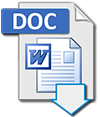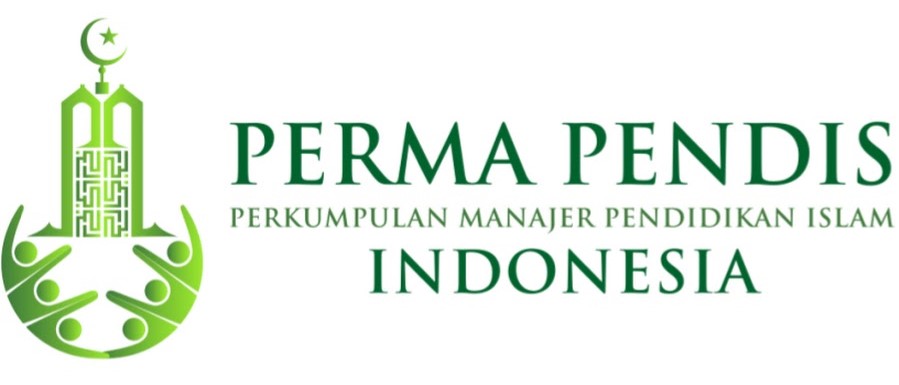Contribution And Priority Action Of The Self-Efficacy And Organizational Climate To Improve Innovative Work Behavior
DOI:
https://doi.org/10.29240/jsmp.v5i2.2941Keywords:
Innovative work behavior, Self-efficacy, Organizational climateAbstract
Innovative work behavior shown by employee activities that generate ideas, promote ideas, and implement ideas is very useful for organizational sustainability. This research seeks to improve innovative work behavior by analyzing the contribution of self-efficacy and organizational climate to ionovative work behavior. The research was conducted on non-permanent instructors at PT PLN (Persero) Pusdiklat with samples 149. Hypothesis testing uses parametric statistical analysis and RCA (Root Cause Analysis) method. The findings of this research: (1) If self-efficacy increases, innovative work behavior will increase; (2) if the organizational climate increases, innovative work behavior will increase; (3) If self-efficacy and organizational climate increase together, innovative work behavior will increase. Based on the RCAÂ (Root Cause Analysis) method, several priority indicators were found to improve innovative work behavior, namely: forming an innovation team, assigning internships / benchmarks, budgeting for awards, K3L training, creating Knowledge Capturing books, recruiting K3L HR, and book review.
Downloads
References
Açikgöz, A., & Günsel, A. (2011). The effects of organizational climate on team innovativeness. Procedia - Social and Behavioral Sciences, 24, 920–927. https://doi.org/10.1016/j.sbspro.2011.09.102
Adenike, A. (2011). Organizational Climate As a Predictor of Employee Job Satisfaction : Evidence From. Business Intelligence Journal, 4(1), 151–165.
Akram, T., Lei, S., & Haider, M. J. (2016). The impact of relational leadership on employee innovative work behavior in IT industry of China. Arab Economic and Business Journal, 11(2), 153–161. https://doi.org/10.1016/j.aebj.2016.06.001
Andersen Bjørn, T. F. (2006). Root Cause Analysis Simplified Tools and Techniques. ASQ Quality Press.
Ardianti, R. (2006). Tinjauan Terhadap Dampak Teknologi Informasi Dalam Organisasi Bisnis Dan Upaya Untuk Merealisasikan Manfaat Positifnya. Jurnal Manajemen Dan Kewirausahaan, 8(2), 72–77. https://doi.org/10.9744/jmk.8.2.pp.72-77
Bandura, A. (1997). Self-Efficacy: The Exercise of Control. W. H. Freeman & Co. https://doi.org/10.1891/0889-8391.13.2.158
Carmeli, A., Meitar, R., & Weisberg, J. (2006). Self-leadership skills and innovative behavior at work. International Journal of Manpower, 27(1), 75–90. https://doi.org/10.1108/01437720610652853
Çekmecelioğlu, H. G., & Günsel, A. (2013). The Effects of Individual Creativity and Organizational Climate on Firm Innovativeness. Procedia - Social and Behavioral Sciences, 99, 257–264. https://doi.org/10.1016/j.sbspro.2013.10.493
Dan, X., Xu, S., Liu, J., Hou, R., Liu, Y., & Ma, H. (2018). Innovative behaviour and career success: Mediating roles of self-efficacy and colleague solidarity of nurses. International Journal of Nursing Sciences, 5(3), 275–280. https://doi.org/10.1016/j.ijnss.2018.07.003
De Jong, J., & Den Hartog, D. (2010). Measuring innovative work behaviour. Creativity and Innovation Management, 19(1), 23–36. https://doi.org/10.1111/j.1467-8691.2010.00547.x
Dorenbosch, L., Engen, M. L. va., & Verhagen, M. (2005). On-the-job innovation: The impact of job design and human resource management through production ownership. Creativity and Innovation Management, 14(2), 129–141. https://doi.org/10.1111/j.1476-8691.2005.00333.x
Hidayat, R. (2017). Peningkatan Aktivitas Komunikasi Interpersonal Dalam Organisasi Melalui Perbaikan Efikasi Diri, Kepemimpinan Dan Kekohesifan Tim. Kelola: Jurnal Manajemen Pendidikan, 4(2), 161. https://doi.org/10.24246/j.jk.2017.v4.i2.p161-170
Ivancevich, J. M., Konopaske, R., & Matteson, M. T. (2014). Organizational, Behavior & Management, Tenth Edition. In McGraw-Hill Companies.
Jason A. Colquitt, Jeffey A. Lepine, M. J. W. (2017). Organizational Behavior: Improving performance and outcomes (Vol. 4, Issue 4). McGraw- Hill Education. https://doi.org/10.1002/pdh.22
John R. Schermerhorn, James G. Hunt, Richard N. Osborn, M. U.-B. (2010). Organizational Behavior. John Wiley & Sons, Inc.
Jones, B. (2012). Innovation and Human Resources: Migration Policies and Employment Protection Policies, Compendium of Evidence on the Effectiveness of Innovation Policy. MIoIR-NESTA: Manchester/London. Compendium of Evidence on the Effectiveness of Innovation Policy Intervention Project, April. https://doi.org/10.13140/RG.2.2.25686.04168
Kang, J. H., Matusik, J. G., Kim, T. Y., & Phillips, J. M. (2016). Interactive effects of multiple organizational climates on employee innovative behavior in entrepreneurial firms: A cross-level investigation. Journal of Business Venturing, 31(6), 628–642. https://doi.org/10.1016/j.jbusvent.2016.08.002
Logahan, J. M., Indrajaya, A., & Proborini, A. W. (2014). Analisis Pengaruh Perilaku Inovatif dan Self – Esteem terhadap Organizational Citizenship Behavior di PT. Stannia Binekajasa. Binus Business Review, 5(1), 396. https://doi.org/10.21512/bbr.v5i1.1261
Madhukar, V., & Sharma, S. (2017). Organisational Climate: A Conceptual Perspective. International Journal of Management, IT and Engineering, 7(8), 276–293.
Maharsi, S. (2000). Pengaruh Perkembangan Teknologi Informasi Terhadap Bidang Akuntansi Manajemen. Jurnal Akuntansi Dan Keuangan, 2(2), 127–137. https://doi.org/10.9744/jak.2.2.pp.127-137
Manktelow, J. (2007). Mind Tools: Essential Skills for an Excellent Career. Mind Tools 2007.
McShane, S. L., & Von Glinow, M. A. Y. (2018). Organizational Behavior : Emerging Knowledge. Global Reality (8th) Edition. In McGraw-Hill.
Newman, A., Tse, H. H. M., Schwarz, G., & Nielsen, I. (2018). The effects of employees’ creative self-efficacy on innovative behavior: The role of entrepreneurial leadership. Journal of Business Research, 89(March), 1–9. https://doi.org/10.1016/j.jbusres.2018.04.001
Newstrom, J. W. (2007). Organizational behavior: Human behavior at work. McGraw- Hill Irwin.
Onne Janssen. (2000). Job demands, perceptions of effort-reward fairness nd innovative work behavior. Journal of Occupational and Organizational Psychology, 287–302.
Patras, Y. E. (2017). Hubungan Kepuasan Kerja Dan Iklim Organisasi Dengan Komitmen Organisasional Guru. Pedagogia, 9(1), 454.
Patterson, Fiona., Kerrin, Maire, Gatto-Roissard, G. (2009). Characteristics & Behaviours of Innovative People in Organisations: Literature review A paper prepared for NESTA Policy and Research Unit (NPRU). May, 1–63.
Ramamoorthy, N., Flood, P. C., Slattery, T., & Sardessai, R. (2005). Determinants of Innovative Work Behaviour: Development and Test of an Integrated Model. Creativity and Innovation Management, 14(2), 142–150. https://doi.org/10.1111/j.1467-8691.2005.00334.x
Redifer, J. L., Bae, C. L., & Zhao, Q. (2021). Self-efficacy and performance feedback: Impacts on cognitive load during creative thinking. Learning and Instruction, 71(August 2020), 101395. https://doi.org/10.1016/j.learninstruc.2020.101395
Robert Kreitner, A. K. (2010). Organizational Behavior. McGraw- Hill Irwin. https://doi.org/10.5005/jp/books/12694_46
Rooney, J. J., & Vanden Hauvel, L. N. (2004). Root cause analysis for beginners. Quality Progress, 37(7), 45–53.
Serrat, O. (2017). The Five Whys Technique. Knowledge Solutions: Tools, Methods, and Approaches to Drive Organizational Performance, 1–1140. https://doi.org/10.1007/978-981-10-0983-9
Shanker, R., Bhanugopan, R., van der Heijden, B. I. J. M., & Farrell, M. (2017). Organizational climate for innovation and organizational performance: The mediating effect of innovative work behavior. Journal of Vocational Behavior, 100, 67–77. https://doi.org/10.1016/j.jvb.2017.02.004
Simbolon, F. (2013). Strategi Pemasaran Global di Pasar Indonesia. Binus Business Review, 4(1), 405–413. https://doi.org/10.21512/bbr.v4i1.1406
Soebardi, R. (2012). Perilaku Inovatif. Jurnal Psikologi Ulayat, 1(1), 57–74. https://doi.org/10.24854/jpu12012-10
Susanne G. Scott, R. A. B. (1994). Determinants of Innovative Behavior: A Path Model Of Individual Innovation In The Workplace. Acodemy of Management Journal, 37(3), 580–607.
Ven, A. H. (1986). Central problems in the management of innovation. Management Science, 32(5), 590–607. https://doi.org/10.2307/2631848
Windiarsih, R., & Etikariena, A. (2018). Hubungan Antara Kepribadian Proaktif dan Perilaku Kerja Inovatif di BUMN X. Journal Psikogenesis, 5(2), 123. https://doi.org/10.24854/jps.v5i2.501


















